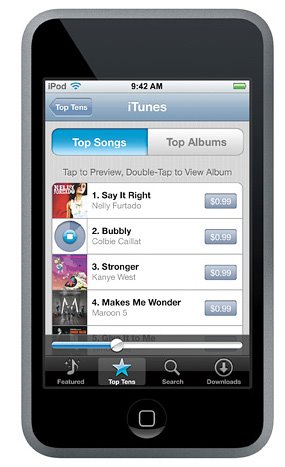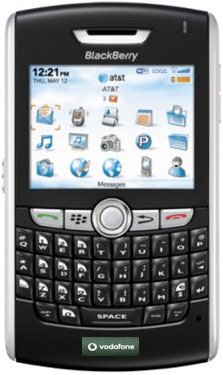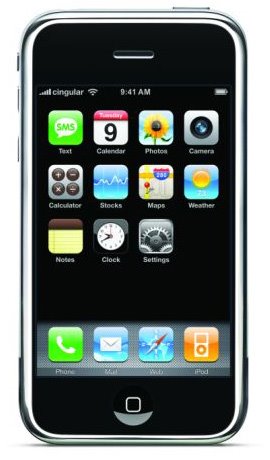Curious about how to take better HDR (high dynamic range) photos with youriPhone 4? Maybe you’ve tried it out but the end result wasn’t as good as you were expecting? Apple makes it pretty easy to take HDR photos, but for some pointers on how to take the best HDR photos possible just follow along after the break!
When Apple introduced
iOS 4.1 they
included HDR capability for the iPhone 4. This rather basic form of HDR works by combining 3 photos (under-exposed, normally-exposed, and over-exposed) for better overall detail and quality. So instead of the sky looking washed-out or shadows an inky mess, you’re left with a better balanced photo that shows more in both areas.
How to enable HDR
First thing’s first — HDR is turned off by default, so you’ll have to turn it on before getting started. It’s as simple as tapping the ‘HDR’ option at the top of the viewfinder in the Camera app.
Better safe than sorry
You also have HDR options from within the Settings app, which let you change whether iOS will keep the original, non-HDR photo as well. Sometimes HDR compositions don’t match up exactly and you get a bad picture. Keeping the original gives you a back up if it’s something important you just can’t take again.
- Launch Settings
- Scroll down and tap Photos
- Toggle ‘Keep Normal Photo’.
Now, on to the good stuff…
1. Keep it steady
When using HDR you’ll want to make sure to keep your hand as steady as possible, otherwise your photo will look a little blurry or not properly aligned like mentioned above. Remember, when the iPhone snaps an HDR photo, it’s actually taking 3 separate pictures and combining them together, but it doesn’t take all 3 photos instantly. That means if your hand moves while it’s capturing the pictures you’re going to end up with a photo that Mr. Blurrycam would be proud of.
It’s best to use a tripod if you can, but in those cases where using a tripod isn’t an option, do everything you can to keep a steady hand for better results. Leaning up against a wall (if possible), or resting on a table or ledge, is a great way to help keep your hand still when taking HDR photos.
Bonus Tip: Another handy tip sent in from a reader is holding down the camera shutter button and releasing it when the moment is right, instead of tapping it when you’re ready take the photo. When you tap the shutter button, you might be slightly nudging the iPhone which can affect the blur level in HDR photos. By tapping and holding the shutter button and then releasing when you’re ready to capture the photo you can dramatically lower movement, thus helping to avoid blur. (thanks parabel!)
2. Focus on your subject
If you’re shooting a specific subject in HDR, make sure your subject is properly focused before snapping the photo. When iOS combines the three images to make it an HDR photo, it has a more difficult time processing and combining the all the pictures to create a good looking HDR photo if the focus is off, so keeping your subject in focus is a great way to get better results.
Just tap on the person or object you want to be in focus. A white square will appear and the iPhone 4 camera will focus accordingly.
3. Keep movement to a minimum
Your photos might not look very good if you have moving subjects within your shot. For example, if you’re taking a picture of a busy intersection like the photo above (thanks,
Sion!), you’re not going to get the best results because people and cars moving around in the shot aren’t going to be captured at the exact same time across all three images.
This rule of thumb is especially true when working with HDR photos. When the iPhone does its job and combines the images into a single HDR, just like if your hands shake, the photo with moving subjects involved will likely blur or suffer from ghosting. Any movement within the shot should be avoided whenever possible.
Note: This can also result in artistic and unique HDR photos, so if that’s you’re intent, don’t be afraid to play around a bit.
4. There’s an app for that
Although the native HDR feature on the iPhone is pretty great, it’s also somewhat limited when it comes to flexibility and customizing your settings. If you want more control over HDR photos, here are a couple of great HDR alternatives you can find in the App Store:
Pro HDR ($1.99 –
iTunes link) Pro HDR is an awesome alternative that lets you really drill down in terms of customizing your HDR photos. You can modify the exposure levels for each shot before combining them into an HDR photo, which is great for specific conditions where you need the added modifiability. It also has a proprietary image alignment algorithm that precisely aligns full-size images in seconds, and the app is very speedy in general when handling HDR shots.
TrueHDR ($0.99 –
iTunes link) TrueHDR is another great HDR app to take a look at. It has a lot of nice features and gives you a choice of ‘Natural’ or ‘Enhanced’ modes, with Natural for the most realistic look and Enhanced for slightly more vivid colors and contrast – pick the look you like! It also makes it easier to capture moments with an AutoCapture mode and gives you better control over exposure points.
So go out and put your new-found knowledge of HDR picture taking into practice and let us know how it goes for you! Have any additional HDR pointers or tips we left out? Also let us know of any other great HDR apps, tips or suggestions you have in the comments!
Bonus Tip: If you’re jailbroken, here’s how to
enable HDR on your iPhone 3G or 3GS. The process isn’t for beginners, and requires you to SSH into your iPhone to modify a plist file, but the end result is not having to upgrade to an iPhone 4 just to get into the HDR game.
Tips of the day will range from beginner-level 101 to advanced-level ninjary. If you already know this tip, keep the link handy as a quick way to help a friend. If you have a tip of your own you’d like to suggest, add them to the comments or send them in to news@tipb.com. (If it’s especially awesome and previously unknown to us, we’ll even give ya a reward…) 






























